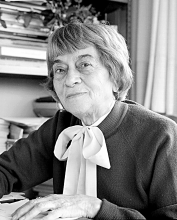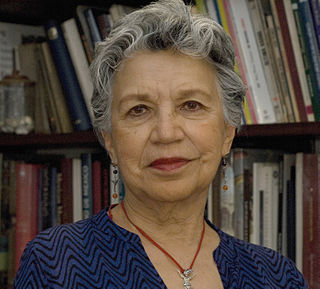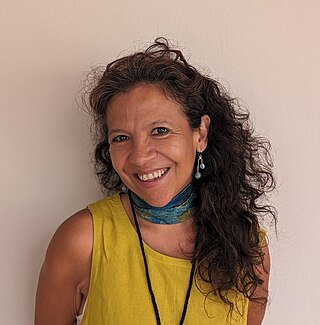Related Research Articles

The National Autonomous University of Mexico, is a public research university in Mexico. It has several campuses in Mexico City, and many others in various locations across Mexico, as well as a presence in nine countries. It also has 34 research institutes, 26 museums, and 18 historic sites.

Guillermo Haro Barraza was a Mexican astronomer. Through his own astronomical research and the formation of new institutions, Haro was influential in the development of modern observational astronomy in Mexico. Internationally, he is best known for his contribution to the discovery of Herbig–Haro objects.
El Colegio de México, A.C. is a Mexican institute of higher education, specializing in teaching and research in social sciences and humanities.

Manuel Sandoval Vallarta was a Mexican physicist. He was a Physics professor at both MIT and the Institute of Physics at the National Autonomous University of Mexico (UNAM).

Imanol Ordorika Sacristán is a Mexican social activist, political leader, academic and intellectual. He was one of the initiators and principal leaders of the Consejo Estudiantil Universitario at the National Autonomous University of Mexico (Universidad Nacional Autónoma de México, UNAM), with Carlos Imaz Gispert and Antonio Santos Romero, from 1986 to 1990. A founder and prominent member of the Partido de la Revolución Democrática (PRD) until 2001. Professor of social sciences and education at the Universidad Nacional Autonoma de Mexico. Ordorika is an active participant in the Mexican political debate as well as an Op-ed writer for La Jornada and other Mexican media.
The National Prize for Arts and Sciences is awarded annually by the Government of Mexico in six categories. It is part of the Mexican Honours System and was established in 1945. The prize is a gold medal and 520,000 pesos.

The National Astronomical Observatory is an astronomical observatory in Baja California, Mexico.

Ramón Xirau Subías was a Spanish-born Mexican poet, philosopher and literary critic.

The National College is a Mexican honorary academy with a strictly limited membership created by presidential decree in 1943 in order to bring together the country's foremost artists and scientists, who are periodically invited to deliver lectures and seminars in their respective area of speciality. Membership is generally a lifelong commitment, although it could be forfeited under certain conditions. It should not be confused with El Colegio de México, a public institution of higher education and research.

Marie Paris Pişmiş de Recillas was an Armenian-Mexican astronomer.

The history of science and technology in Mexico spans many years.
Juan Manuel Lozano Mejía was a recognized Mexican physicist. He was one of the pioneers of nuclear physics in Mexico and an academic at Universidad Nacional Autónoma de México for over fifty years.

Tonantzintla Observatory is an astronomical observatory located in the municipality of San Andrés Cholula in the Mexican state of Puebla. It consists of two adjacent facilities: the National Astrophysical Observatory of Tonantzintla, operated by the National Institute of Astrophysics, Optics and Electronics (INAOE), and the National Astronomical Observatory - Tonantzintla, operated by the National Autonomous University of Mexico (UNAM). OANTON is located on the INAOE campus, which includes numerous other buildings. OAN - Tonantzintla is located immediately to the east on mostly unused property. The observatory is located 11 kilometres (6.8 mi) west of Puebla and 33 kilometres (21 mi) east of Popocatépetl, eruptions of which sometimes interfere with observing.

Silvia Torres-Peimbert is a Mexican astronomer. She won the L'Oréal-UNESCO Awards for Women in Science in 2011 for Latin America for her work determining the chemical composition of nebulae.

NGC 2242 is a planetary nebula in the constellation Auriga. It was discovered by Lewis A. Swift on November 24, 1886, and was thought to be a galaxy until a study published in 1987 showed it to be a planetary nebula. The nebula is located about 6,500 light-years away, and about 1,600 light-years above the galactic plane.

Julieta Norma Fierro Gossman, better known as Julieta Fierro, is a Mexican astrophysicist and science communicator. She is a full researcher at the Institute of Astronomy and professor of the Sciences Faculty at the National Autonomous University of Mexico (UNAM). She is part of the Researchers National System in Mexico, holding a level III position. Since 2004 she is a member of the Mexican Academy of Language.
Josefina Muriel de la Torre was a Mexican writer, historian, researcher, bibliophile, and academic. She specialized in the history of the feminine and religious world of the time of New Spain. She was awarded the Order of Isabella the Catholic by the government of Spain in 1966.

Martha Gabriela Araujo-Pardo is a Mexican mathematician specializing in graph theory, including work on graph coloring, Kneser graphs, cages, and finite geometry. She is a researcher at the National Autonomous University of Mexico in the Mathematics Institute, Juriquilla Campus, and the 2024–2026 president of the Mexican Mathematical Society.
Irene Cruz-González Espinosa is a Mexican astronomer whose research interests include the nuclear activity in galaxies, the observation of galaxies and their insterstellar medium, star formation, and optical and infrared telescope instrumentation. She is a researcher and professor in the Institute of Astronomy at the National Autonomous University of Mexico (UNAM).

Isaac Ochoterena (1885–1950) was a Mexican autodidact, biologist, botanist, plant collector, researcher, educator and academic who published over 230 scientific works. Initially a primary school teacher, he went on to become a professor at the Universidad Nacional Autónoma de México, a researcher at the government-funded research center Dirección de Estudios Biológicos (DEB), and Dean of the Biology Institute at UNAM.
References
- ↑ "Dr. Manuel Peimbert Sierra". www.astroscu.unam.mx. Retrieved May 19, 2020.
- ↑ Hernandez, Mirtha (September 21, 2011). "Subraya Peimbert papel de educación". Reforma .
- 1 2 "2012 Hans A. Bethe Prize Recipient". American Physical Society . Retrieved November 17, 2015.
- ↑ "Manuel Peimbert". www.iau.org. Retrieved May 19, 2020.
- ↑ "Manuel Peimbert". National Academy of Sciences . Retrieved November 17, 2015.
- ↑ "Peimbert Sierra, Manuel" (in Spanish). Colegio Nacional. Archived from the original on November 19, 2015. Retrieved November 17, 2015.
- ↑ "Peimbert, Manuel". TWAS. Retrieved May 19, 2020.
- ↑ "TWAS Medal Lectures". TWAS. Retrieved May 19, 2020.
- ↑ "Reciben cientificos mexicanos Silvia Torres y Manuel Peimbert Premio Hans A. Bethe de la Sociedad de Fisica de EU" (in Spanish). Mexican Academy of Sciences. March 30, 2012. Retrieved November 17, 2015.
- ↑ Ceron, Ricardo (February 11, 2008). "Entrevista con Silvia Torres, Premio Nacional de Ciencias 2007". El Universal (in Spanish). Retrieved November 17, 2015.
- ↑ "Manuel Peimbert". American Philosophical Society . Retrieved November 17, 2015.
- ↑ Franco, Jorge (2015). Un instante en la eternidad: Un Punto en el Punto Azul (in Spanish). Palibrio. p. 52. ISBN 978-1-5065-0670-8 . Retrieved November 17, 2015.